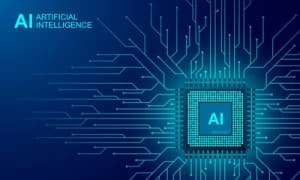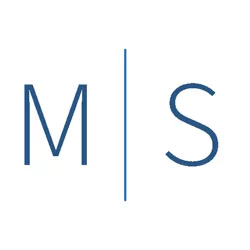Artificial Intelligence – Right or Wrong in Photography?
Using artificial intelligence (AI) in producing art has been in news recently. This is because an AI-generated artwork won first place in a contest at the Colorado State Fair. As a result, there was a great hue and cry about the results. Most of it was of the nature of, that’s not fair, or that’s not art, it has to be artist made (note they didn’t define “artist made”). However, some noted that it is not all that different than using Photoshop and other digital manipulation techniques.
The creator didn’t violate any of the contest rules. Additionally, he submitted it in the “digital art/digitally manipulated photography” category under the name under the name “Jason M. Allen via Midjourney”. Midjourney is the AI program used to generate the image. Furthermore, the judges stated they would have given him the top prize even if they had explicitly realized the involvement of AI.

So, what exactly is artificial intelligence? Actually, the definition is rather simple. Most definitions are similar to those on Wikipedia or Google. Wikipedia states, “Artificial intelligence (AI) is intelligence demonstrated by machines, as opposed to the natural intelligence displayed by animals and humans.” Google defines it as “the theory and development of computer systems able to perform tasks that normally require human intelligence, such as visual perception, speech recognition, decision-making, and translation between languages.” The Google definition is especially significant as it contains two important factors. First, AI figures out what to do. Second, it acts on this information without involving human interaction. The only human involvement is is the defining the parameters of the task.
AI In Photography
Although the winning artwork was submitted in a category that includes photography, no one, the artist included, is considering it a photo. However, it is easy to see how this technology could evolve into creating photos composed of bits and pieces from a library of photos.
At this point, some of you may be thinking that the future of photography is doomed. After all, how can “true” photographers ever compete against those using artificial intelligence. They’re cheaters! We have to stop the use of all AI in photography.
Well before you get too worked up on this issue, we need to stop and think about it for a moment. I have some news for you. First, the bad news. AI has been used in photography extensively in photography for quite some time. Just about all (I’m being conservative in my estimate) contests have photos that have AI components as winners. Second, the worst news. You’re one of the “cheaters”! So, am I. I don’t know of a digital photographer who isn’t. Don’t believe me? So, let’s take a closer look at how we use AI to take and process our images.
AI In Our Digital Cameras
Modern digital cameras have many features that make taking photos easier. The technology assesses the particular situation and independently acts on it. That’s AI! Just think of all the “auto” settings you have. All are a form of AI. For example:
- AWB (Automatic White Balance) The camera assesses the scene and automatically sets the white balance with no action on our part.
- Autofocus – once we initiate the process it automatically focuses for us.
- Program mode – The camera independently sets the shutter speed and aperture.
- Point and Shoot camera – well the name says it all. The camera decides everything except where to point and when to press the shutter.
AI In Post-processing
Post-processing is an area where artificial intelligence comes into play in a big way. Many of the tools we use are AI based. For example:
- Content-aware functionality – This is probably the most frequent post-processing use of AI. It is content-aware fill, content-aware cropping, or content-aware clone stamping. It’s all AI. Even our favorite tool, the Spot Healing Brush Tool, uses content-aware functionality.
- HDR Processing – This automatically blends different exposures of a composition to get a “perfectly” exposed image.
- Sky and background replacement – A form of automated compositing. Combines multiple images to create a composite image.
- Photo-stitching – This will automatically stitch together overlapping compositions to make one seamless image.
- Focus-stacking – This will blend images that each have a different focus point to create an image with everything in focus.
- Composition tools – There are tools that will automatically straighten and crop our images.
If you start looking, I’m sure you’ll find many more such things.
But It’s Not The Same Thing!
I suspect that by this point you may be thinking that these comparisons aren’t the same as creating an entire image with artificial intelligence. And that’s true! Using AI as a tool isn’t the same as ceding the entire creative process to AI.
There are two prime aspects of photography in making a photographic image. First, it has to be photography based. That is, it has to be composed of photographs (i.e., initially captured with a camera) and not digital art made solely with software. Second, all the elements of the image have to be of our own making. Creating an image by compositing other photographer’s images might be considered art (the legalities aside) but it is not our photo.
It doesn’t appear that AI technology can currently meet these two aspects. However, I suspect it won’t be too long before AI can scan the library of our photos and composite them in to our desired image, perfectly composed and processed. We could do that manually but what should we do when offered the opportunity to do it via AI?
Lots Of Question, Not Many Answers
Given the unquestioning acceptance of the use of the existing AI tools will we complacently make the incremental leap to full AI creation when it is available? If not, why not? How far is too far in the use of AI? Who decides what is acceptable? If we say no use of artificial intelligence is acceptable, are we willing to give up all the types of tools listed above?
There are lots of question. Unfortunately, there are not a lot of answers at this point. A recent blog article by Adobe states:
Addressing the fear that AI could one day replace artists, Adobe’s chief product officer Scott Belsky then described how AI should only ever be “your co-pilot in creative endeavours.” He said Adobe wanted to develop its AI offering thoughtfully, “approaching the idea from a creator-centric perspective. We want it to benefit creatives, not replace them.”
Is it enough to “hope” people will use it responsibly (however you define responsible use)? Possibly, something like Content Authenticity Initiative will help. But then, who knows? Perhaps Margo Channing as played by Bette Davis said it right.
Leave A Comment And Share
So, what are your thoughts on the use of AI? I would love to hear your comments and feedback. Please leave a comment in the comment box below.



